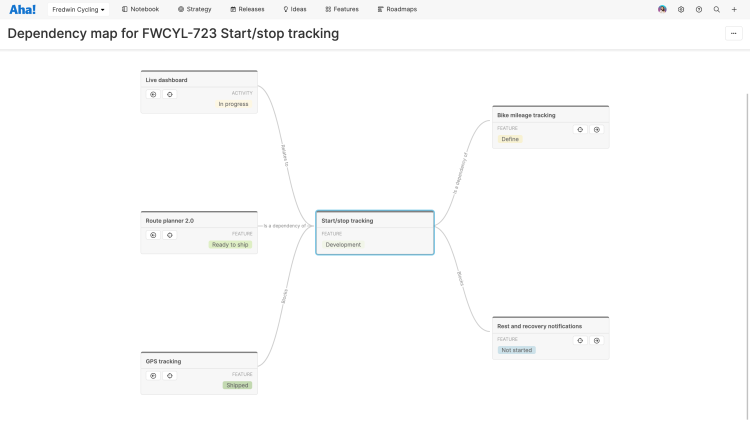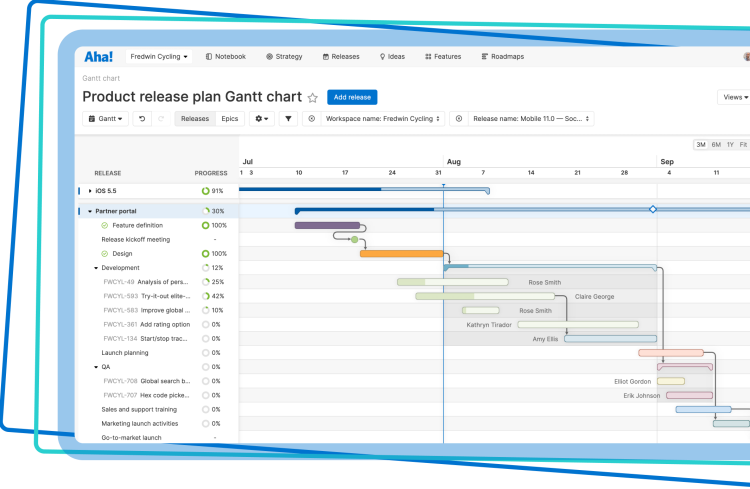
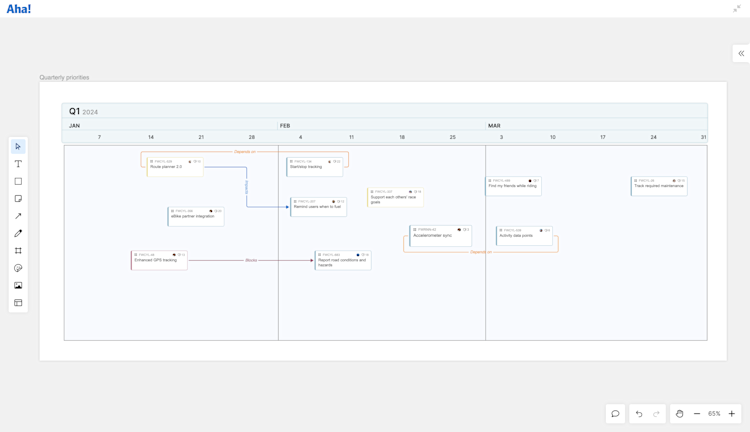
Fine-tune your plans
Bring stakeholders together to align on the delivery plan. Seamlessly pull existing work items into a whiteboard and show the dependency lines between them. This provides important context as you discuss priorities and timing. Move items around freely to correctly sequence work before you finalize the details.

Increase transparency
See how work interconnects on a timeline. Create a strategy roadmap to communicate how dependencies impact your high-level plan, and use a Gantt chart to coordinate cross-functional releases. Adjust schedules dynamically to resolve timing conflicts as you move forward in your planning process.
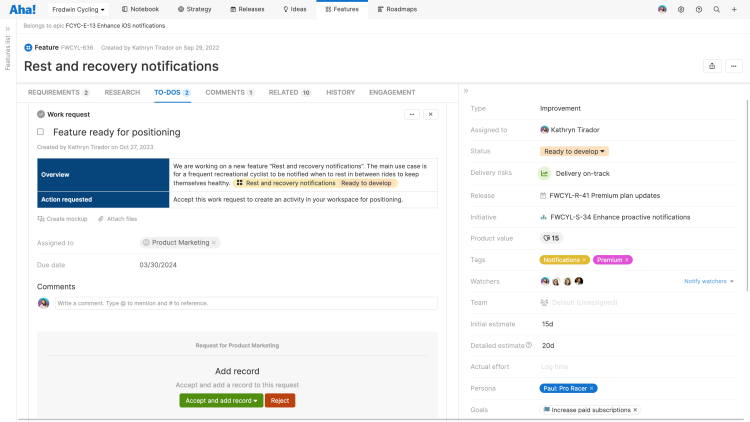
Highlight team activities
Assign work requests to other teams to capture exactly what is needed and when. Once a team accepts a request, a dependency is automatically established between corresponding work items. This streamlines cross-functional workflows — ensuring everyone can move ahead with clarity and purpose.
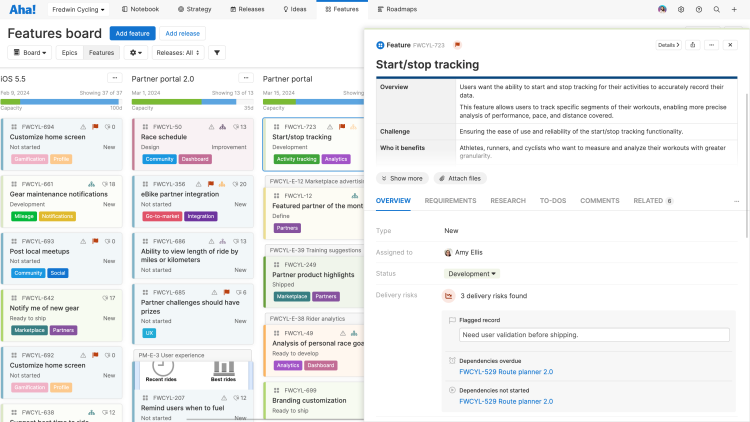
Monitor timing challenges
Avoid surprises and missed deadlines. Use Aha! Roadmaps and Aha! Develop together to set alerts for different types of delivery risks — including unscheduled features, stalled work, and past-due dependencies. Sync dependencies with tools such as Jira and Azure DevOps to stay informed of blockers during development.
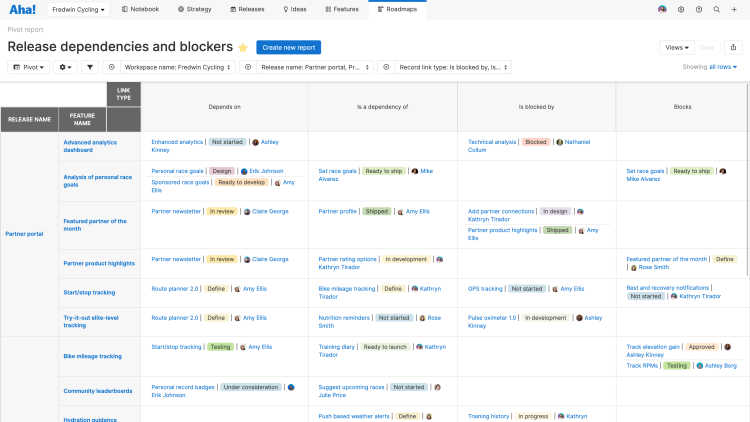
Report on status
Include related work items in your progress reports. Visualize key data — such as status, due date, and assignee — so you can monitor dependencies and launch on schedule. Use a dependency report to track complex relationships across multiple products and teams in one view.
